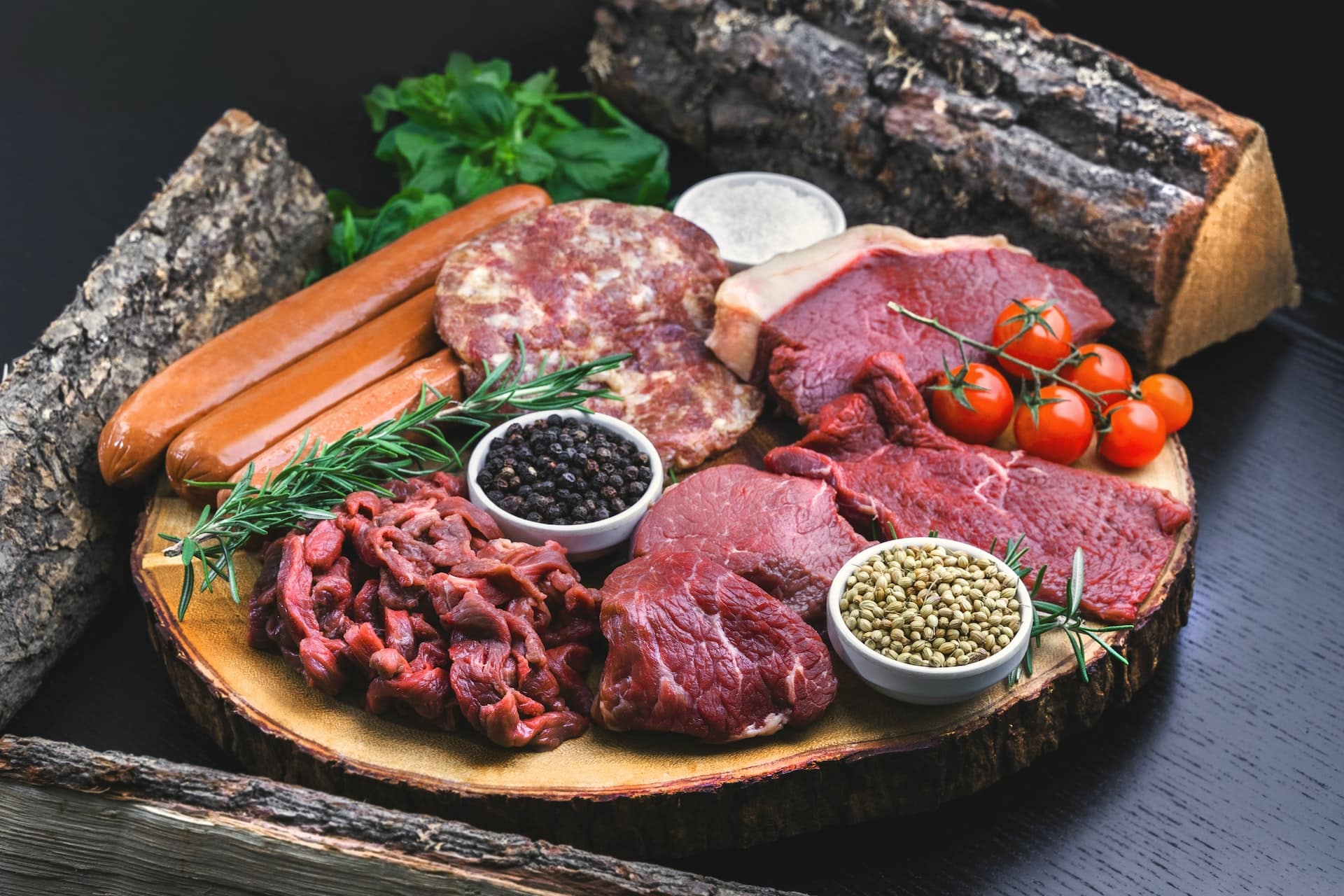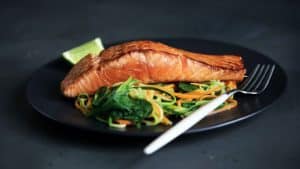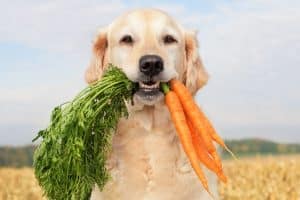If you’re a dog owner who’s been keeping up with the latest trends, you may have heard about raw food diets for dogs.
Dog biscuits and canned food have been the main meals for our dogs for many years, but those are quite different from what their wild ancestors would have eaten. As such, many dogowners (at least in the UK) are switching away from canned goods.
Let’s say it’s good and healthy, but is it sustainable? Can dogs eat raw food every day?
Dogs can eat raw food daily in the UK, provided it’s a nutritionally balanced diet. It’s important to ensure that the raw food is high quality, properly sourced and handled, and prepared in a clean environment to reduce the risk of illnesses. It’s pertinent to consult with your vet or a pet nutritionist beforehand.
So, if you’re curious about raw feeding and want to know more about it, stick around. I’ll cover everything from the nutritional benefits of raw food to the risks and safety concerns.
DISCLAIMER: The information provided is not a substitute for veterinary advice. Readers should consult their veterinarian before changing their dog’s diet.
Is the raw food diet good for dogs?
Some vets in the UK may recommend a raw food diet for dogs. It could be either commercially made raw food or a homemade diet with added supplements depending on your dog’s health and overall needs. Working with your vet to ensure your dog gets all the necessary nutrients and is healthy is important.
1. It promotes better digestion and nutrient absorption.
One of the biggest advantages of feeding them raw food is that it can improve your dog’s digestion and nutrient absorption. Raw food is free from fillers, additives, and preservatives in many commercial dog foods.
It’s also rich in enzymes that aid digestion, helping your dog break down their food more easily and extract more nutrients. This leads to better overall health and a happier pup.
2. It ensures a shinier coat and healthier skin.
Feeding your dog a raw diet can also lead to a shinier coat and healthier skin. This is because raw food contains more essential fatty acids, such as Omega-3 and Omega-6, which are important for maintaining both.
These fatty acids also help reduce inflammation, which can lead to skin problems such as itching and dryness.
3. It increases a dog’s energy and stamina.
Many people are worried about starting their puppy on a raw diet because they think they may get ill from harmful bacteria. However, the chances of this are very small because dogs usually have a stronger disposition than humans.
One benefit of feeding your dog a raw diet is that you know exactly what is in their food. Commercial pet food can contain harmful and nutritionally empty elements.
Raw food is more nutrient-dense than commercial dog food, giving your dog more energy to run, play, and explore. Many dog owners who switch to a raw diet report that their dogs become more active and lively, showing increased stamina and endurance.
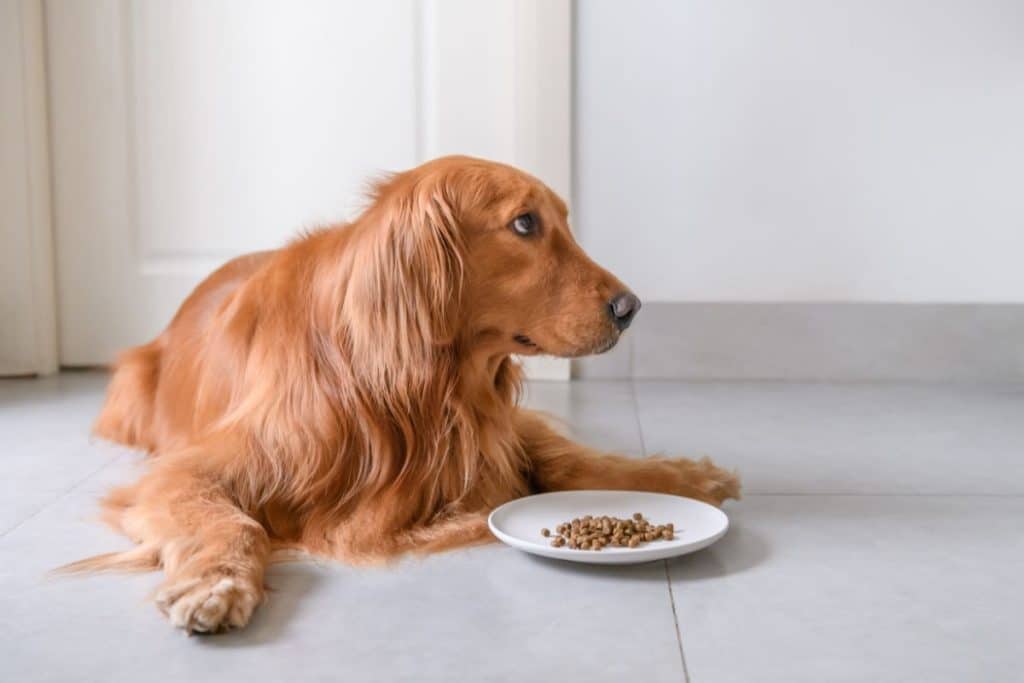
4. It improves their dental health.
Chewing on raw meat and bones can help remove plaque and tartar, preventing tooth decay and gum disease.
Raw food contains natural enzymes that help break down the bacteria that cause dental problems. Additionally, raw bones are a great source of calcium, which is essential for strong teeth and bones.
5. It boosts their immune system.
It’s because raw food contains a wide range of vitamins, minerals, and antioxidants that help support your dog’s immune system. A strong immune system can help your dog fight off illness and disease, keeping them healthy and happy for longer.
Read More: Best Dog Food For Flatulence in UK 2023
6. It reduces the risk of certain health issues.
Finally, feeding your dog raw food can reduce its risk of certain health issues. For example, a raw diet has been shown to reduce the risk of obesity, diabetes, and cancer. It can also help manage existing health problems, such as allergies and digestive issues.
Commercial pet food usually contains many fillers, often composed of carbohydrates such as rice or potato. Although these are okay in small amounts, when they bulk up most of your dog’s meal, the extra carbs could lead to weight gain.
They are described as unhealthy because they offer little to no nutritional value and could be replaced by higher-quality ingredients. Raw food can be a great option for overweight pets and health-conscious owners.
7. It has a positive response from many dog owners.
The main reason raw pet food’s popular is the positive responses from pet owners. Many claim that feeding their pets raw food makes their coats healthier and glossier, reduces the stool the dog produces, and gives them more energy.
How to feed your dog raw food?
If you’ve decided to start feeding your dog a raw food diet, there are a few important things to remember.
It’s important to ensure your dog gets a balanced and nutritious diet and to transition to raw food to avoid any digestive issues gradually. So, you must add supplements such as Calcium and fish oil to your dog’s raw food diet. It’s best to consult a veterinarian or nutritionist about developing a diet plan.
Here are some steps to take when starting your dog on a raw food diet:
Step 1: Talk to Your Vet
Before making any changes to your dog’s diet, it’s important to consult with your veterinarian.
They can help you determine if a raw food diet is appropriate for your dog and guide them to get all the necessary nutrients.
Step 2: Choose High-Quality Meat and Other Ingredients
When selecting ingredients for your dog’s raw food, choosing high-quality meats and other ingredients is important. Look for grass-fed, organic, and hormone-free meats, fresh fruits, and vegetables. It’s also important to include bones for calcium and other nutrients.
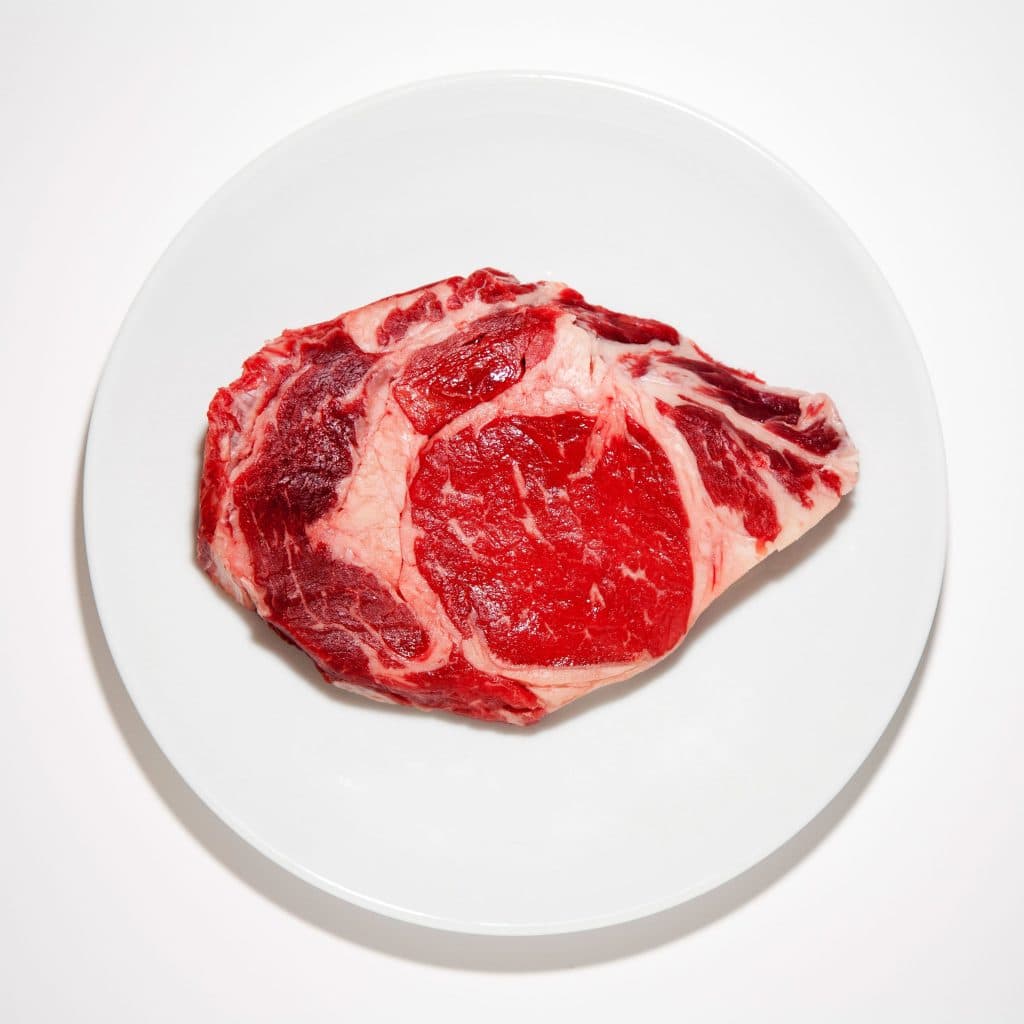
Step 3: Gradually Transition Your Dog to the New Diet
Start by adding a small amount of raw food to their regular diet and gradually increasing it over time. Monitor your dog’s digestion and adjust its diet as needed.
Step 4: Monitor Your Dog’s Health and Well-Being
Monitoring your dog’s health and well-being is important as you transition to a raw food diet. Look for improved energy, healthier coat and skin, and improved digestion. Monitor any negative changes, such as digestive issues or weight loss, and adjust their diet accordingly.
What are the dangers of feeding a raw diet to dogs?
Feeding raw food to dogs may have benefits, but it’s important to consider the potential downsides. Here are some of the cons of feeding raw food to dogs:
1. Risk of Foodborne Illnesses
Feeding raw food to your dog increases the risk of foodborne illnesses such as salmonella, E. coli, and listeria. These bacteria can be harmful not only to your dog but also to humans who come into contact with their faeces.
2. Difficulty Ensuring a Balanced Diet
Raw food diets require careful planning to ensure your dog gets all the necessary nutrients. Balancing the right amount of protein, fat, and carbohydrates with proper knowledge and a nutritionist’s advice can be easier.
3. Potential for Nutritional Imbalances
Feeding too much of a certain type of food can lead to nutritional imbalances. For example, feeding too much liver can lead to a toxic Vitamin A overdose.
Similarly, feeding too much calcium in the form of bones can cause constipation and skeletal issues.
Read More: Best Grain-Free Dry Dog Food for Dogowners in the UK!
4. Increased Risk of Ingesting Bones
Raw food diets often include bones as a source of calcium. While this is important for your dog’s diet, there is a risk of choking, dental damage, or internal damage if bones are not properly prepared. Bones can also splinter and cause blockages in your dog’s digestive system, which may require surgery.
5. More Time and Preparation Needed
If you don’t purchase ready-made raw meals for your puppy, feeding them a raw diet will require much time and preparation. You’ll need to purchase all the individual ingredients. And you can only make meals a few days in advance.
It’s because the meat will only stay fresh for a short period. Buying all of the ingredients can also cost a lot of money. These costs will continue to increase for a developing puppies as they grow, and getting the diet right is vital.
6. Incompatibility with the Dog
Even though most of the feedback from owners is positive, some pets experience issues when put on a raw diet. This mainly consists of digestive issues, such as excessive wind and diarrhoea.
This won’t affect all dogs, but if your puppy is one of them, it can be very worrying and distressing for the young dog. Suppose your dog has an underlying medical condition. In that case, you are unaware of a raw diet may not be suitable due to the high amount of protein.
7. Homemade Raw Food Can Cause Nutrition Deficiencies
If you don’t buy a readymade raw diet for your puppy, choose to feed them homemade pet food. You could put your pup at risk of becoming malnourished.
Nutritional deficiencies won’t appear in your pup immediately after putting them on a raw diet, which means their growth and development can be affected. Many pet nutritionists worry that homemade raw diets will lack essential minerals like phosphorous and calcium. The solution is pre-prepared raw dog food from a reputable brand.
What should dogs eat on a raw diet?
Dogs are natural carnivores, so a raw meat, bones, and organs diet can be an excellent way to feed your furry friend. But not all raw meat is created equal, and some are better for your dog than others.
Here are some things to consider when it comes to choosing the right raw meat for your dog:
1. What raw meat is good for dogs?
- Chicken is a great source of protein for dogs and is often the most affordable meat option. However, it’s important to ensure the chicken is cooked thoroughly to avoid any risk of salmonella.
- Beef is a good source of protein and contains essential vitamins and minerals. Use grass-fed and organic meat to avoid hormones or antibiotics.
- Lamb is a great protein source for dogs and is high in nutrients such as zinc, vitamin B12, and iron. However, it can be more expensive than other meats.
- Fish is a great source of omega-3 fatty acids, which can help with inflammation and joint health. It’s essential to ensure the fish is cooked thoroughly to avoid any risk of parasites.
- Organ meats, such as liver, kidney, and heart, are a great source of nutrients for dogs. They contain essential vitamins and minerals such as iron, copper, and vitamin A.
In addition to meat, it’s essential to include some fruits and vegetables in your dog’s raw diet. These can provide your dog with essential vitamins, minerals, and fibre. Some great options include carrots, apples, spinach, and sweet potatoes.
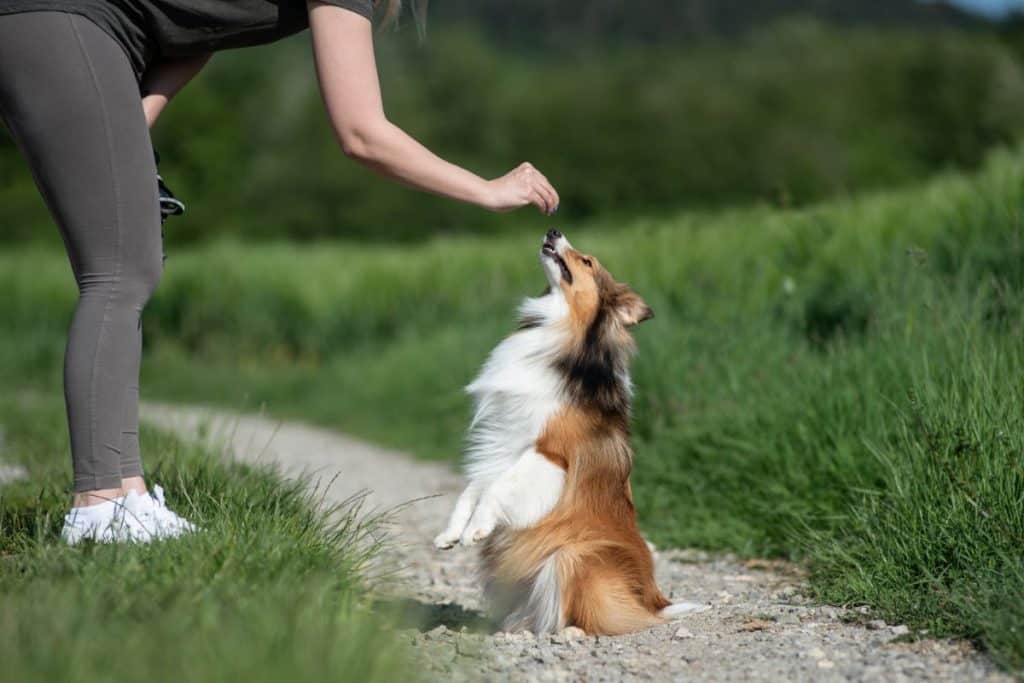
2. What raw meat is bad for dogs?
Certain meat types are not good for your dog’s raw food plan.
- Pork can be dangerous for dogs to eat raw as it may contain a parasite called Trichinella spiralis, which can cause severe health problems.
- Wild game, such as venison or rabbit, can carry harmful parasites to dogs, making it essential to cook the meat thoroughly.
- Bones can be a great source of calcium for dogs, but it’s essential to avoid giving them cooked bones. Cooked bones can splinter and cause damage to the digestive tract.
Read More: Can dogs eat cat food?
Frequently Asked Questions (FAQs)
1. Do dogs live longer on raw food?
It’s not scientifically proven that dogs live longer on a raw food diet than on a commercial one. However, some have reported improved health and quality of life after switching to a raw diet. It’s important to note that feeding a balanced and complete raw food diet requires careful planning and consideration.
2. Is raw food better than kibble?
There is no one-size-fits-all answer to this question.
Raw food and kibble both have their advantages and disadvantages. Raw food is often seen as more natural. It may offer improved digestion, a shinier coat, and better dental health. However, it requires more preparation and may pose a higher risk of foodborne illness.
On the other hand, kibble is convenient. It typically contains a balanced diet of nutrients but may contain lower-quality ingredients and additives. Ultimately, it’s important to consult a vet and choose the best diet for your dog.
3. At what age can you start feeding raw food to dogs?
Dogs can generally start eating raw food at around 8 weeks old. However, it’s best to consult your veterinarian before starting your puppy on a raw diet. They can help you determine when your puppy is ready and provide guidance on safely introducing raw food to their diet.
It’s important to ensure the food is nutritionally balanced and appropriate for your puppy’s age and size.
4. How often do dogs poop on raw food diet?
Generally, dogs on a raw food diet tend to have fewer bowel movements (1-2 times a day) than those on a commercial kibble diet. The frequency of your dog’s poop on a raw food diet may vary based on the dog’s breed, size, age, and activity level. It’s because raw food is more digestible and produces less waste.
Typically, dogs on a raw food diet may have bowel movements once or twice daily, but this can vary. If you have concerns about your dog’s poop frequency or consistency, it’s always best to consult your veterinarian.
